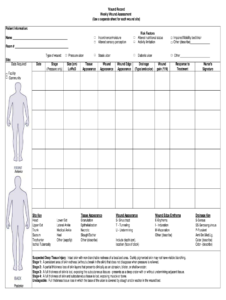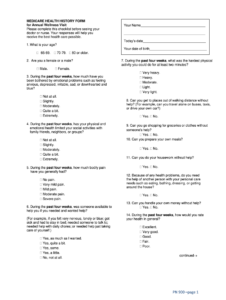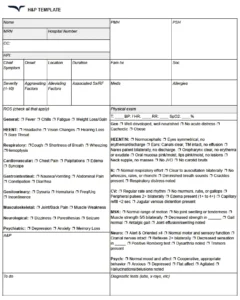Imagine a scene: sirens wailing, a flurry of activity, and crucial decisions needing to be made in a matter of seconds. In the midst of a medical emergency, clear and concise communication is paramount. But how can healthcare professionals ensure that vital information is relayed accurately and efficiently when time is of the essence? This is where a well-structured medical emergency documentation template comes into play. It serves as a standardized tool for capturing essential details, aiding in diagnosis, treatment, and ultimately, improving patient outcomes.
Think of it as a roadmap during a crisis. A medical emergency documentation template provides a framework for recording critical patient information, such as medical history, allergies, medications, and current symptoms. Having this information readily available can significantly reduce errors, speed up the assessment process, and enable healthcare providers to make informed decisions quickly. It’s more than just paperwork; it’s a vital link in the chain of care during a stressful situation.
In this article, we’ll delve into the importance of using a medical emergency documentation template, explore its key components, and discuss how it can streamline emergency care. We’ll also cover some practical considerations for creating and implementing effective templates within your healthcare setting. Let’s explore how this simple tool can make a significant difference in the face of medical emergencies.
The Undeniable Importance of Standardized Documentation in Emergencies
In the high-pressure environment of an emergency room or at the scene of an accident, clear communication and access to accurate patient information are absolutely critical. A standardized medical emergency documentation template ensures that everyone involved in the patient’s care, from paramedics to emergency room physicians, has access to the same essential information, presented in a consistent and easy-to-understand format. This eliminates ambiguity and reduces the risk of misunderstandings that can lead to medical errors.
Imagine a scenario where paramedics arrive at the scene of a car accident. The injured patient is unconscious, and their wallet contains only minimal identification. Using a standardized template, paramedics can quickly record vital signs, observe obvious injuries, and document any medications they find on the patient. This information can then be relayed to the hospital in a clear and concise manner, allowing the emergency room staff to prepare for the patient’s arrival and initiate appropriate treatment without delay. Without such a system, crucial time might be wasted trying to gather the same information in a piecemeal fashion, potentially compromising the patient’s outcome.
Furthermore, medical emergency documentation template aids in continuity of care. As the patient moves through the healthcare system, from the initial point of contact to specialist consultations and follow-up appointments, the documentation serves as a comprehensive record of their emergency care. This ensures that healthcare providers have a complete picture of the patient’s condition and treatment history, facilitating informed decision-making at every stage. This is particularly important for patients with complex medical conditions or multiple comorbidities, where a thorough understanding of their history is essential for providing safe and effective care.
Beyond patient care, standardized documentation also plays a crucial role in legal protection and quality improvement. In the event of a medical malpractice claim, a well-documented record of the patient’s emergency care can serve as evidence of the healthcare providers’ actions and decisions. Similarly, analyzing data from standardized templates can help healthcare organizations identify areas for improvement in their emergency care protocols and processes, leading to better patient outcomes and a more efficient healthcare system.
Ultimately, the use of a medical emergency documentation template is not just about paperwork; it’s about optimizing patient care, ensuring clear communication, minimizing errors, and promoting a culture of safety and accountability within the healthcare system. It empowers healthcare professionals to make informed decisions quickly and effectively in high-pressure situations, ultimately improving patient outcomes and saving lives.
Key Elements to Include in Your Medical Emergency Documentation Template
Creating an effective medical emergency documentation template requires careful consideration of the information that is most critical in an emergency setting. While the specific elements may vary depending on the context (e.g., ambulance, emergency room, urgent care clinic), certain core components should be included in almost every template.
First and foremost, patient identification is essential. This includes the patient’s full name, date of birth, gender, and any identifying numbers (e.g., medical record number). If the patient is unable to provide this information, document the source of the information and any relevant details that can help identify the patient later. Contact information for a family member or emergency contact should also be included if available. This allows healthcare providers to communicate with the patient’s loved ones and gather additional information about their medical history.
Next, a section dedicated to the patient’s medical history is crucial. This should include information about any known allergies, current medications (including dosages), past medical conditions, and previous surgeries. In an emergency situation, this information can be life-saving. For example, knowing that a patient is allergic to penicillin can prevent a potentially fatal allergic reaction. Similarly, understanding a patient’s underlying medical conditions can help healthcare providers tailor their treatment plan to address the patient’s specific needs.
The template should also include a section for documenting the events leading up to the emergency. This should include a detailed description of the patient’s symptoms, the time of onset, and any relevant circumstances surrounding the event. This information can help healthcare providers determine the potential cause of the emergency and guide their diagnostic and treatment efforts. For example, a patient presenting with chest pain should be asked about the characteristics of the pain, any associated symptoms (e.g., shortness of breath, nausea), and any activities they were engaged in before the pain started.
Finally, the template should include a section for recording vital signs and physical examination findings. This includes the patient’s blood pressure, heart rate, respiratory rate, temperature, and oxygen saturation. Any abnormal findings on physical examination should be documented in detail, including the location, size, and characteristics of any injuries or abnormalities. This information provides a snapshot of the patient’s current condition and helps healthcare providers track their response to treatment over time.
By incorporating these key elements into your medical emergency documentation template, you can ensure that healthcare providers have access to the information they need to provide timely and effective care in emergency situations. Remember to tailor the template to your specific needs and context, and to regularly review and update it to reflect best practices and changes in medical knowledge.
Think about the peace of mind knowing that if you or a loved one were facing a medical crisis, the essential information needed for care would be readily available. It’s a small step with huge potential impact.
By using a medical emergency documentation template, you not only streamline the process for healthcare professionals but also empower individuals to take control of their health information and advocate for the best possible care during critical moments.



